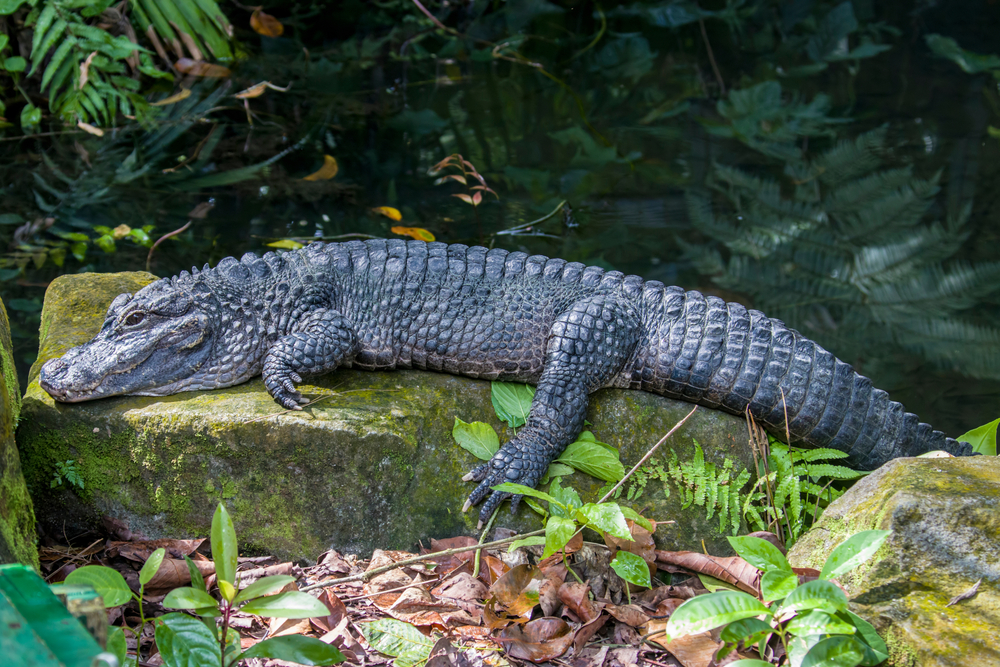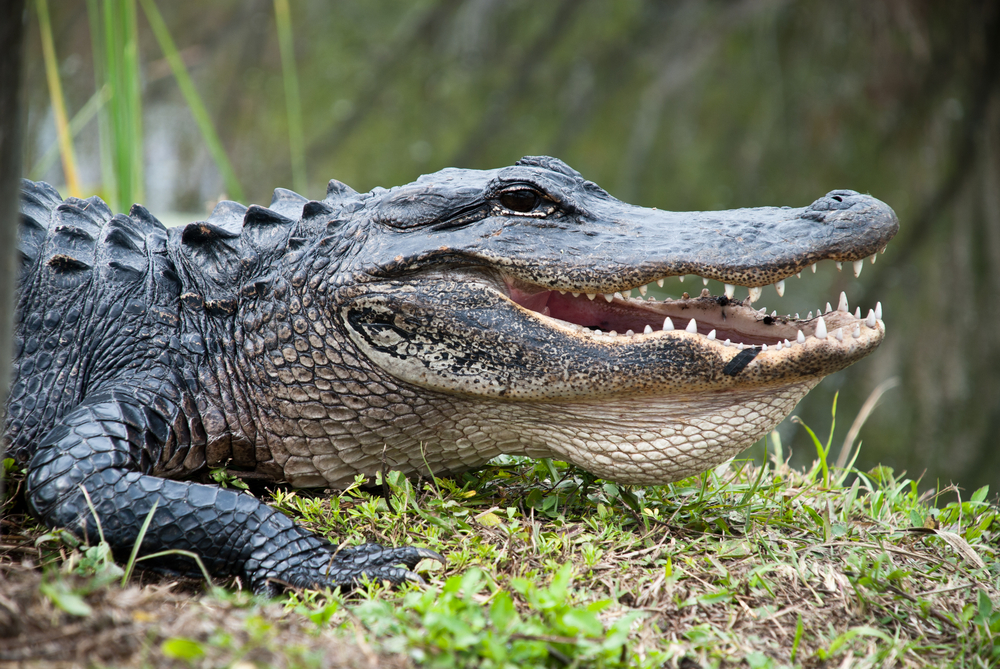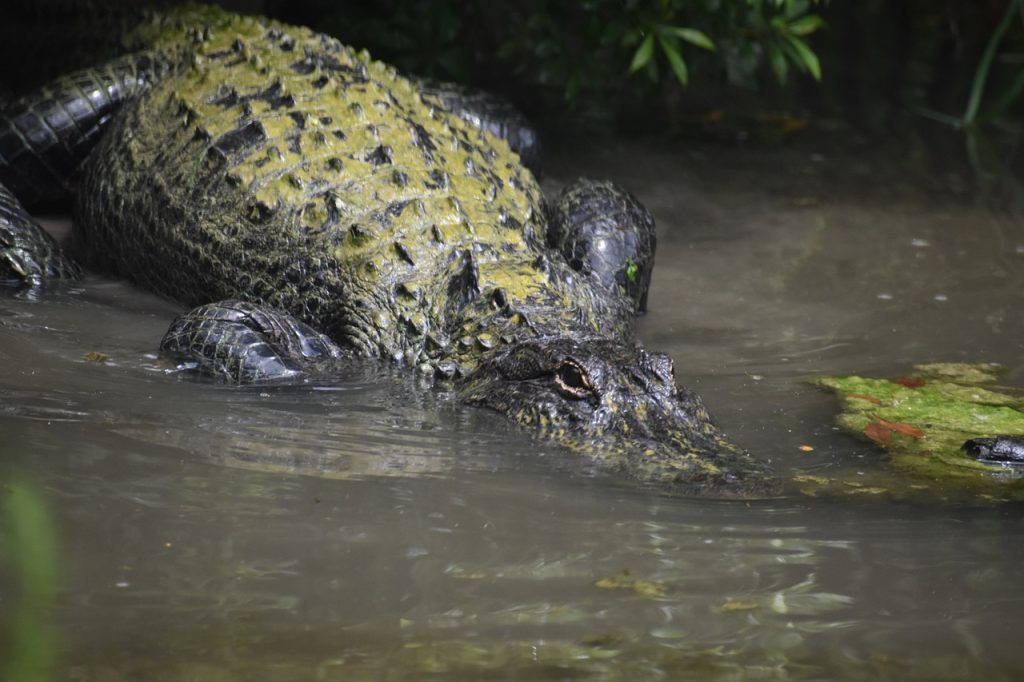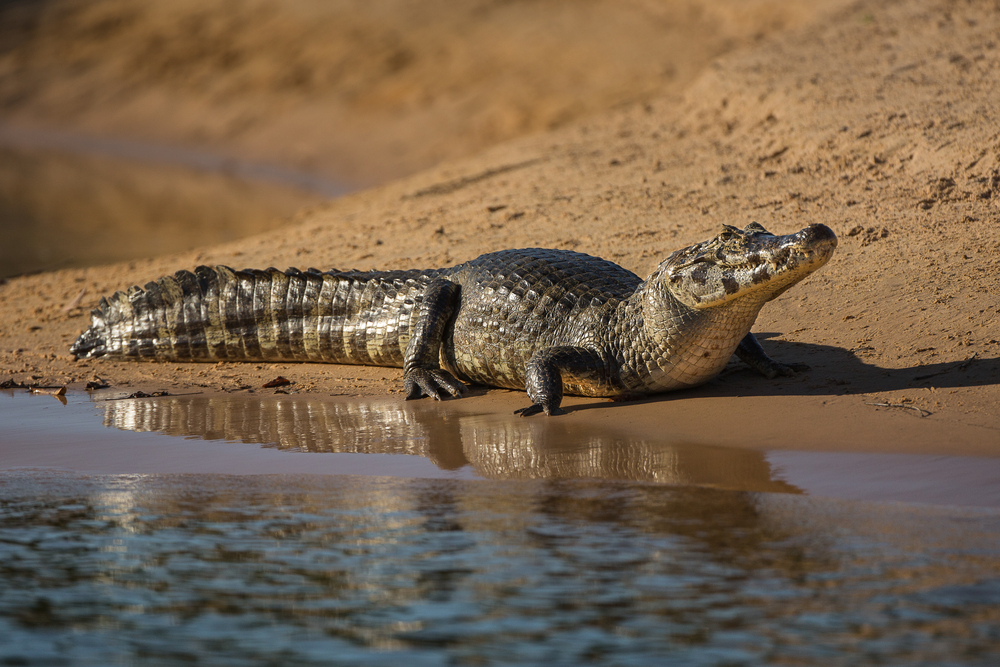Uniqueness
One of Only Two Living Alligator Species:
The Chinese Alligator is one of only two surviving species in the genus Alligator—the other being the American Alligator (Alligator mississippiensis). While the American species is widespread and thriving, the Chinese Alligator is critically endangered and limited to a tiny native range along the lower Yangtze River in eastern China.
Smallest Living Crocodilian in Its Genus:
It is also the smallest of all alligators, rarely exceeding 7 feet (2.1 m) in length. Despite its size, it retains all the physical power and armored adaptations of larger crocodilians, including full-body osteoderms and a crushing bite.
Cold Climate Adaptation and Hibernation:
Unlike most crocodilians that live in tropical or subtropical environments, the Chinese Alligator is adapted to temperate climates. It is one of the few crocodilians that hibernate, retreating to self-dug burrows during the cold winters of central China, where it can remain dormant for up to six months.
Armored Belly (Ventral Osteoderms):
It is the only crocodilian species with bony plates (osteoderms) under its belly, in addition to dorsal armor. This provides extra protection from predators and environmental hazards, and may assist in body temperature regulation in colder climates.
Burrowing Specialist:
Chinese Alligators are expert burrowers, digging extensive tunnel systems in riverbanks and wetlands. These burrows provide shelter, help regulate temperature and humidity, and are essential for hibernation. This behavior is rare among crocodilians.
Cultural Significance:
Known in Chinese folklore for centuries, the Chinese Alligator is believed to have inspired legends of the Chinese dragon, especially due to its armored body, powerful roar, and association with rivers. Historically revered, it has also been depicted in ancient Chinese texts and art.
Conservation Symbol:
With fewer than 200 individuals in the wild (as of the latest estimates), the Chinese Alligator is a flagship species for conservation in China. Extensive efforts are underway to protect and breed the species, particularly at:
Survival from Prehistoric Times:
The Chinese Alligator is a living fossil, having changed very little in millions of years. Its lineage stretches back to the late Cretaceous, making it one of the most ancient and primitive surviving crocodilians.







































































